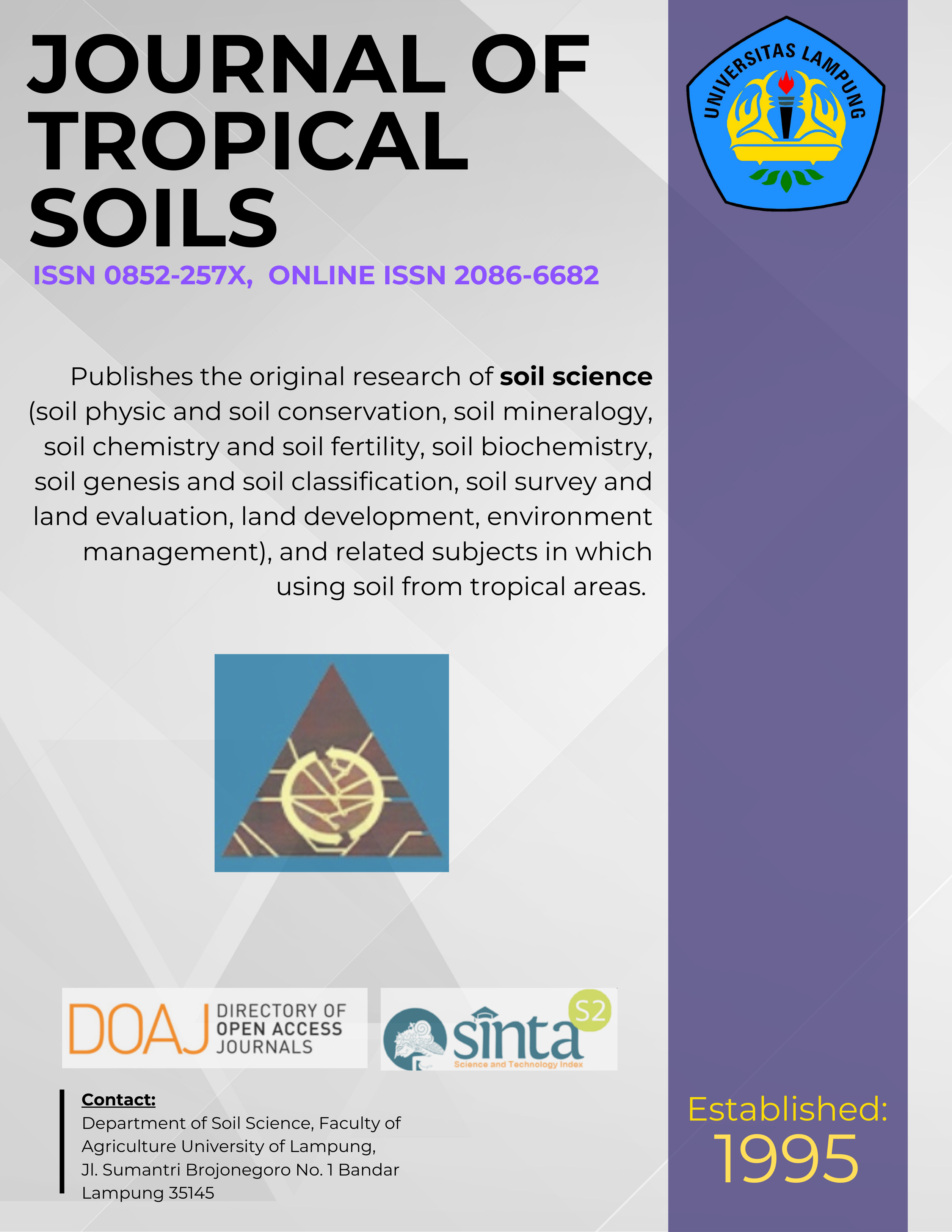Utilizing Coal Ash and Humic Substances as Soil Ameliorant on Reclaimed Post-Mining Land
Main Article Content
Abstract
Coal ash and humic substances can be used as soil ameliorant in the reclamation of formerly mined land. Due to its high pH and nutrients content, coal ash can be used to improve the chemical properties of the soil, such as increasing of pH, and increasing the levels of nutrients availability in the soil. Humic substances may also be used to complement, as they can increase the release of nutrients from the coal ash. Thus, the objective of this study was to assess the influence of coal ash and humic substances on soil chemical characteristics, nutrient absorption, and plant growth. This study was conducted in two locations - in a nursery area, involving two treatment factors: coal ash at different dosages (0, 200, and 400 g polybag-1), and humic material also at varying dosages (0, 0.04, and 0.08 g C polybag-1); and in a post-mining field using similar treatments: coal ash dosage (0, 2.5, and 5.0 kg planting-1 hole) and humic material dosage (0, 0.56, and 1.12 g C planting hole-1). The results showed that coal ash and humic materials significantly increased the soil pH, available P, and exchangeable K, Ca and Mg. Coal ash also contained a number of heavy metals but in quantities that are far below the limits set by both Indonesian Government Regulation and the US Environmental Protection Agency (USEPA). The above soil amelioration effects mean that. applicaton of coal ash and humic substances can significantly increase the growth of Jabon trees in the reclaimed post-mining land.
[How to Cite: Ade MO, Sudarsono, Iskandar and DT Suryaningtyas. 2014. Utilizing Coal Ash and Humic Substances as Soil Ameliorant on Reclaimed Post-Mining Land. J Trop Soils 19: 161-169. Doi: 10.5400/jts.2014.19.3.161]
[Permalink/DOI: www.dx.doi.org/10.5400/jts.2014.19.3.161]
Downloads
Article Details
Section
License for Authors
Authors who publish with this journal agree to the following terms:
- Authors retain copyright and grant the journal right of first publication with the work simultaneously licensed under a Creative Commons Attribution License that allows others to share the work with an acknowledgement of the work's authorship and initial publication in this journal.
- Authors are able to enter into separate, additional contractual arrangements for the non-exclusive distribution of the journal's published version of the work (e.g., post it to an institutional repository or publish it in a book), with an acknowledgement of its initial publication in this journal.
- Authors are permitted and encouraged to post their work online (e.g., in institutional repositories or on their website) prior to and during the submission process, as it can lead to productive exchanges, as well as earlier and greater citation of published work (See The Effect of Open Access).
License for Regular Users
Other regular users who want to cite, distribute, remix, tweak, and build upon author’s works, even for commercial purposes, should acknowledge the work’s authorship and initial publication in this journal, licensed under a Creative Commons Attribution License.

